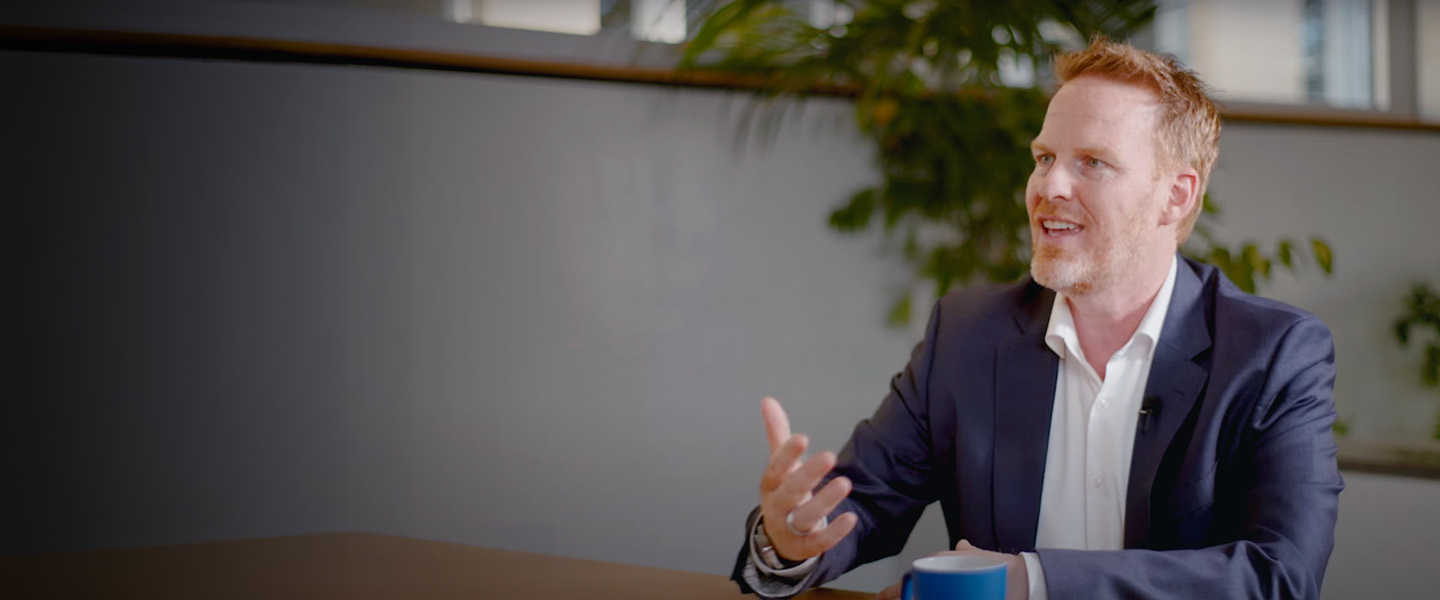
Building a new strategy, top-down and middle-out
Howard Yu, LEGO Professor of Management and Innovation, Susan Goldsworthy, IMD Professor of Leadership, Communications and Organizational Change, and John Weeks, IMD Professor of Leadership and Organizational Behavior, reflect on how LEGO Group was able to devise a new strategy that helped the iconic childrens’ play materials manufacturer to sustainable sales growth.
For well over a decade until 2017, LEGO Group built a track record of strong sales, brick by colorful brick. The numbers were impressive: 18% average compound annual growth.
But that year, the company’s sales began to stall amid a challenging retail environment and, within the company, stagnation stemming from a weakened innovation drive and lack of focus and discipline.
Something had to change. The 90-year family-owned business needed to empower its people. It brought in Niels B Christiansen as CEO to develop a new strategy and return the company to sustainable growth.
He began his tenure amid a painful restructuring that had resulted in 8% of the 19,000-strong workforce being laid off. At the same time, the operating environment was not helping, and exhibited the classic characteristics of volatility, uncertainty, complexity, and ambiguity, often referred to by the acronym VUCA.
Christiansen’s strategy stressed the importance of focusing on priorities and making decisions grounded in the LEGO Brand Framework (setting out beliefs, mission, vision, and other elements) and the LEGO Idea Paper (which sets out the controlling Kristiansen family’s values and vision for the company1).
To thrive, the LEGO Group needed to become more agile and responsive to customers, foster a more empowered workforce, reduce its hierarchy, and distribute leadership responsibility more evenly. This was especially important given that new product launches accounted for about 60% of sales.
Empowering the workforce
Loren Schuster, LEGO Group’s Chief People Officer and Head of Corporate Affairs, was convinced the company needed an empowered workforce to succeed in the face of its internal and external challenges. This required the company to improve motivation and unleash the creativity and energy of its people.
However, to do this would require a revamp of the company’s complex leadership environment which had been built up in layers over time, involving as many as 28 often overlapping leadership models, leadership development interventions, and change programs.
Many people with long tenures at the company had grown attached to “their” elements of the various models. Expectations were therefore neither clear nor aligned, and it was challenging to translate the various models and frameworks into effective action. Perhaps unsurprisingly, there were also pockets of resistance to change.
The group therefore needed a clear description of what it meant to lead in the company.
Shuster realized, too, that it would be a wasted opportunity to have the executive leadership team define the new model and then cascade it down through the organization.
Instead, leadership should delegate this to a non-hierarchical group of leaders from across the organization –which was named the Working Group. “We had tried and failed to implement successful leadership initiatives over the years,” said Shuster. “This time we decided to empower people from all levels to work together to create something meaningful that captured the imagination and enthusiasm of the whole organization.”
Christiansen and the leadership team agreed with this approach, and the company set up a three-tiered governance structure, with distinct roles and responsibilities for the Working Group. This body had to be big enough to represent all parts of the LEGO Group but small enough to “compromise and decide”.
The Working Group’s challenge was to determine a timeless leadership model while respecting the values of the 90-year-old family company, as expressed in the LEGO Brand Framework. It then had to recommend the right approach to embedding the model in the organization. Once the leadership model was defined, the LEGO Group would need to implement and quickly scale it up to energize people at all levels and deliver the company’s strategy.
Partnering with IMD
Shuster realized that success would require the guidance and support of an external organization and decided to partner with a business school, rather than a traditional management consultancy, because he wanted an organization that could help guide the co-creatin of a new leadership model rather than defining it themselves.
LEGO decided to partner with IMD to solve the problem through a two-phase program.
In the first phase, Shuster and IMD teams co-created three two-day workshops for a cross-functional Working Group of 15 people representing all regions of the LEGO Group and entitled LEGO Way of Leading. The aim was to create a safe space to empower a Working Group to explore what the company expected of its leaders and to (re)define a single leadership model.
The workshops were based on four principles. One was creating a safe space so that group members could establish ground rules and dare to challenge each other. The second was divergence, to ensure the Working Group considered a broad range of ideas and frameworks from within and beyond the company. Convergence, the third principle, involved analyzing and synthesizing stakeholder data and integrating other divergent content presented by IMD, while the last principle was closing the loop, which meant going back to the people who had been interviewed so they knew their voice had been heard and they felt involved.
“From the beginning we told the Working Group it was up to them to decide what was needed,” explained Shuster. “If they thought an existing leadership model or framework was outdated and we are not using it, they had the power to take it away.”
IMD facilitated these workshops, which took place at its Lausanne campus in mid-2018, culminating in the development of the Leadership Playground, a manifesto laying out a new approach for leadership. The group defined the job of a leader as “Energizing everybody every day”, with the three key behaviors of focused, curious, and brave. This was printed in a Leadership Playground Manifesto, which was approved by the LEGO Family Board.
Scaling up
The Leadership Playground was launched in 2019. In the second phase — focused on “scaling up and energizing” — IMD and LEGO partnered to scale it up, with programs for the company’s senior leaders.
This involved two programs for top leaders: “Panorama” for VPs and SVPs and “Catalyst” for directors and senior directors, designed to fully embed the new model and scale up, developing leaders to better deliver the company’s strategy and mobilize the organization.
Senior leaders learned about themselves and applied new leadership behaviors to help deliver the strategy. They worked on over 40 cross-functional action-learning projects that explored new strategic and commercial approaches to product innovation, channel development, and digitalization.
The functional and strategic knowledge and the more clearly aligned culture defined by the Leadership Playground has equipped senior leaders to deliver the strategy.
“Seeing results from our leaders in the Leadership Playground work and in Panorama and Catalyst has only increased my appetite to empower them to make decisions and move resources around at their discretion,” said Christiansen.
Simultaneously, the company spread the Leadership Playground from the middle out through 15 “Playground Builder” events focused partly on driving culture change that trained 800 employees to use a specially designed toolset that energized the rest of the organization. There are now 1,800 Playground Builders, who are passionate about the new leadership model and have been trained to share and facilitate discussions on embedding it into their teams’ particular context.
Indirectly, the engagement with IMD has contributed to driving results: revenue accelerated from single digits during the period of engagement to more than 20%, and operating margin recovered to pre-2017 levels.
Key takeaways
- Creating an empowered workforce allows LEGO Group to respond more quickly to internal and external challenges and unleash the creativity and energy of its people.
- IMD helped the LEGO Group to think differently by exposing it to different models and examples and creating a safe space to disagree and debate, and by helping it to align and connect with the company’s context. This was the benefit of divergence and convergence.
- It was important to bring together the perspectives of leading the business, leading teams, and leading oneself, and to show that they are mutually supporting.
- The impact achieved was possible because IMD and LEGO Group worked simultaneously at many different levels of the organization with a consistent set of messages adapted to the various groups.
- Both top-down and middle-out approaches are essential to create sustainable change in attitudes and behaviors.
Research Information & Knowledge Hub for additional information on IMD publications

This episode takes you behind the scenes of a recent gathering led by the World Business Council for Sustainable Development together with IMD, where David Bach sat down with two sustainability leaders.

All organizations should have a plan to secure trust during, after (and even before) a crisis hits. Here are a host of examples, good and bad, to learn from.
Medacta Group SA is a rising star in the orthopedics market, achieving global success through innovative products and techniques, with a particular emphasis on minimally invasive techniques that bring meaningful value to its patients. With its app...

Tired teams, wasted weekends, and unread reports—here are 7 ways to restore morale and reignite performance. Avoid unnecessary reporting and non-essential tasks.
The Handtmann case examines the co-CEO leadership model in the context of family business. Based on interviews with three key executives – the co-CEOs and the President of the Advisory Board – the case focuses on how Handtmann handled the leadersh...

The 7 shifts you need to make to lead in a turbulent world for acuity and inner rootedness. Grounded Edge Leadership.

10 years of exclusive surveys reveal top supply chain strategy challenges—and how tools like AI, ML, and digital twins are reshaping the path forward.

Anxiety can sharpen focus, but if it impacts your well-being or leadership, it’s worth a check-in. These helpful questions may help you reflect.

As corporate America adjusts to a shifting political environment under President Donald Trump, companies must rethink their approach to DEI.

Uncover AI use cases and opportunities with 4 clear imperatives that align data with business value. Avoid pitfalls and ask the right questions.
Research Information & Knowledge Hub for additional information on IMD publications
in I by IMD
Research Information & Knowledge Hub for additional information on IMD publications
Case reference: IMD-2663 ©2025
Research Information & Knowledge Hub for additional information on IMD publications
in I by IMD
Research Information & Knowledge Hub for additional information on IMD publications
Research Information & Knowledge Hub for additional information on IMD publications
The Handtmann case examines the co-CEO leadership model in the context of family business. Based on interviews with three key executives – the co-CEOs and the president of the advisory board – the case focuses on how Handtmann handled the leadersh...
Research Information & Knowledge Hub for additional information on IMD publications
Research Information & Knowledge Hub for additional information on IMD publications
Research Information & Knowledge Hub for additional information on IMD publications
in I by IMD
Research Information & Knowledge Hub for additional information on IMD publications
Research Information & Knowledge Hub for additional information on IMD publications

